June 9, 2014
 Shirow Di Rosso is the Artmaster behind the new comic-book-style picture book series about malicious cyber attacks, The Cynja. After years of working as an IT engineer, he’s now bringing cyberspace to life through drawing. Shirow lives near Brussels, Belgium with his awesome wife and two cynja daughters Sakura and Hinata. He makes sure to fuel the flames of his firewall on a regular basis.
Shirow Di Rosso is the Artmaster behind the new comic-book-style picture book series about malicious cyber attacks, The Cynja. After years of working as an IT engineer, he’s now bringing cyberspace to life through drawing. Shirow lives near Brussels, Belgium with his awesome wife and two cynja daughters Sakura and Hinata. He makes sure to fuel the flames of his firewall on a regular basis.
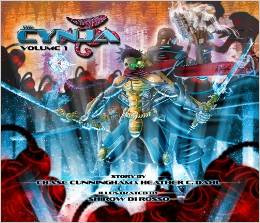 Bianca Schulze: How did you come to be the illustrator for The Cynja, the first volume in the action packed picture book series about malicious cyber attacks?
Bianca Schulze: How did you come to be the illustrator for The Cynja, the first volume in the action packed picture book series about malicious cyber attacks?
Shirow Di Rosso: In 2013, after 14 years working as an IT engineer, I decided it was time to pursue my dream of being an illustrator. Within a few weeks of making the leap I got an email from Chase, one of the authors, asking whether I’d be interested in working on a children’s book about cybersecurity. The way he told me the story was going to unfold—Cyber Ninjas battling to save the Internet from a host of fiendish enemies controlled by the Botmaster–hooked me instantly. This was a world I knew, and I was being given a chance to visualize it in a way that had never been done before.
BS: What mediums did you use to create the artwork in The Cynja? Is everything digitally created?
SDR: I sketch, ink, color and do all the layouts on a large computer screen, mostly using Photoshop. It might surprise people, but I don’t have any formal training in art—I’m self-taught, all through tutorials I found on the Internet! It’s kind of appropriate, don’t you think? A virtually trained artist illustrating a virtual world!
BS: Is there a particular illustration or moment in the book that you would consider your favorite?
SDR: At team Cynja, we have a running joke about dragons being “old-school” bad guys, and that the job prospects for dragon slayers are zero compared to tech savvy cyber ninjas. But I love dragons. The scene where the Cynsei—the Obi Wan Kenobi of Cynjas—recalls fighting a dragon in Feudal Japan was a delight to draw. To be honest, it gave me goosebumps.
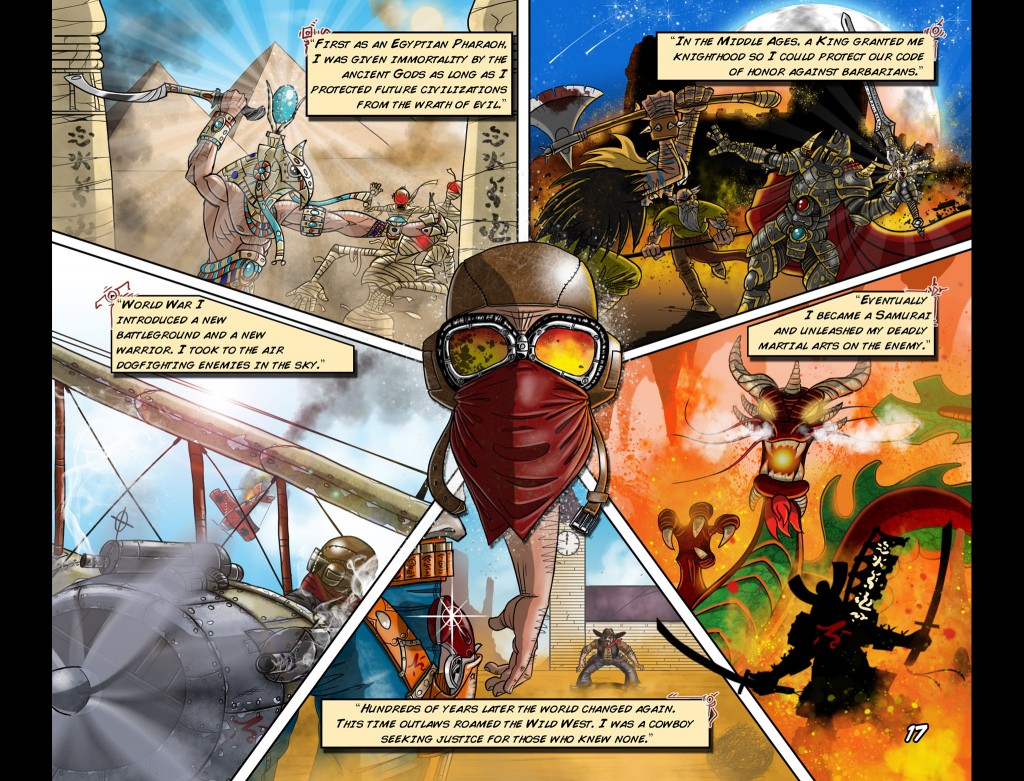
BS: What is your creative process? Did you work from the beginning of the story to the end?
SDR: Well, after first contact with Chase, I had the full script by the end of the day. Obviously this triggered all sorts of images in my head. But with something like this, you don’t get anywhere without being systematic, and the first step was character design. Chase and Heather had, of course, already visualized the characters in order to write the story, so I used their sketches for inspiration. Still, they were looking for me to make these characters real. I nailed the the Cynsei and the Botmaster immediately; with the other characters, there was the back and forth of refinement, all of which took place virtually, as they live in the US and I’m based in Belgium. Once we knew what the heroes and villains looked like, I began visualizing how they would move and interact through the story. A graphic novel or comic book is similar to the storyboarding of a movie. As Heather is a former TV journalist, she tends to see narrative and dramatic action in terms of camera movements, which really helped with sketching the layout. She was able to describe what she wanted in very clear terms. Once the pages were sketched, inking and coloring was pretty straightforward.
BS: Can you tell us about your artistic style and who your biggest influences are?
SDR: My biggest influence is Japanese Manga, especially Masamune Shirow’s Ghost in The Shell. I’m also a big fan of Marvel (Sorry DC!) and the work of Joe Madureira, Todd McFarlane, Adam Warren, and Philippe Buchet. I suppose you could say, I’m an artist forged through the meeting of East and West!
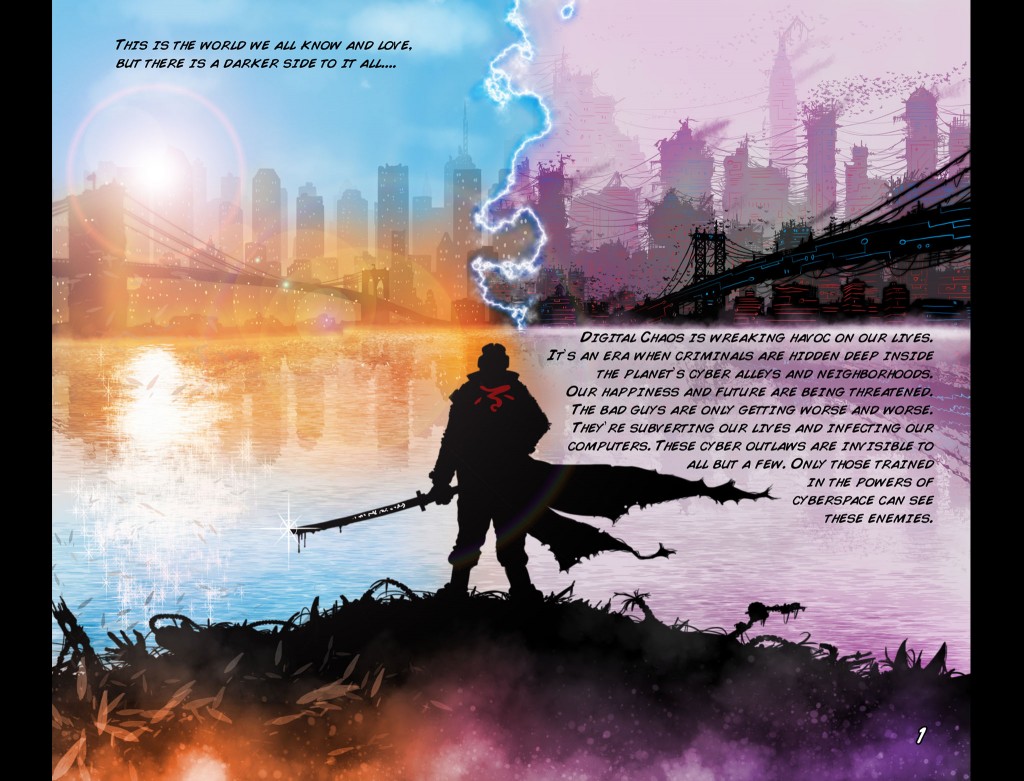
BS: Were there any parts of the story that needed to be changed because of the artwork? Were there places where words were removed because the pictures were telling the story?
SDR: Telling a story and then illustrating it are very different things. While every author has an idea of how their story looks as they are writing it, seeing it visualized can often change that story. This is particularly true of comic books, which rely on visual power to keep the reader turning the page. It’s not enough to have a great story. With The Cynja, the process of sketching and inking, I think, gave Chase and Heather a sense of how a story could be told, and that fed their imaginations. It was a great collaborative experience.
BS: Due to the comic book format, so many segments are needed for each page. How long did it take you to complete all of the illustrations?
SDR: I got the script at the end of April 2013; it was finished on the 23rd of November. Boy, was I proud of that moment! I had never done anything like this before.
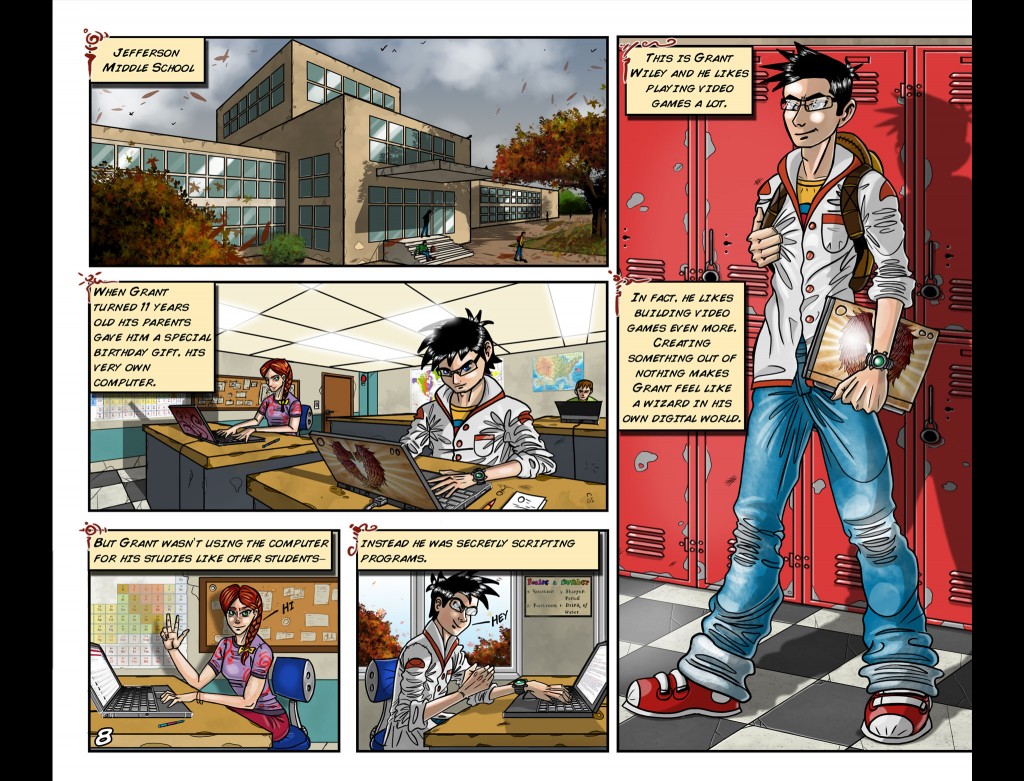
BS: What kind of feedback have you been receiving from children that have read The Cynja?
SDR: We did an early test run of rough sketches and basic layouts on Heather’s nephew and the children of friends and relatives. They all loved it. That was the kind of reaction that motivates you to do the best work you can. And I think we all rose to that pure excitement. The reaction to the finished book has been incredible. Parents tell us about their kids reading it over and over again—and even playing out the character of the Cynja. To me, that’s awesome. It vindicates my decision to become an illustrator. But best of all is when you hear that a child, who won’t normally read, has become engrossed in the book. You realize that you have added a bit of magic to a child’s life, one that you hope will grow into a love of reading.
BS:If you could be reincarnated as your favorite literary character, who would you choose and why?
SDR: That’s a tough question. I’d have to say Gandalf from Tolkien’s Lord of the Rings. He has led an amazing life, and has seen some incredible things, in his very long and rich existence. He’s friends with giant eagles, he gives awesome firework displays, and he has battled a Balrog in the mines of Moria. And let’s face it, a Balrog is more or less a dragon. Did I mention I love dragons? But Gandalf also gave hope to a lot of people in times of despair. Ian McKellen really made the character come to life in the movies.
From the comic book universe, I would pick Wolverine. He looks rough and tough but he always does what’s right. He has suffered but still keeps fighting. Over the years many writers and illustrators have had the privilege to tell his stories and have managed to keep this character interesting. It seems that I like characters who go through hard times and come out the other side as better people.
BS: As a parting note, is there anything you would like to share with your readers?
SDR: Don’t give up on your dreams. Do what you love and get better doing it. If you love your job, you never have to work a day in your life. Trust me. Also, the world needs more Cynjas!
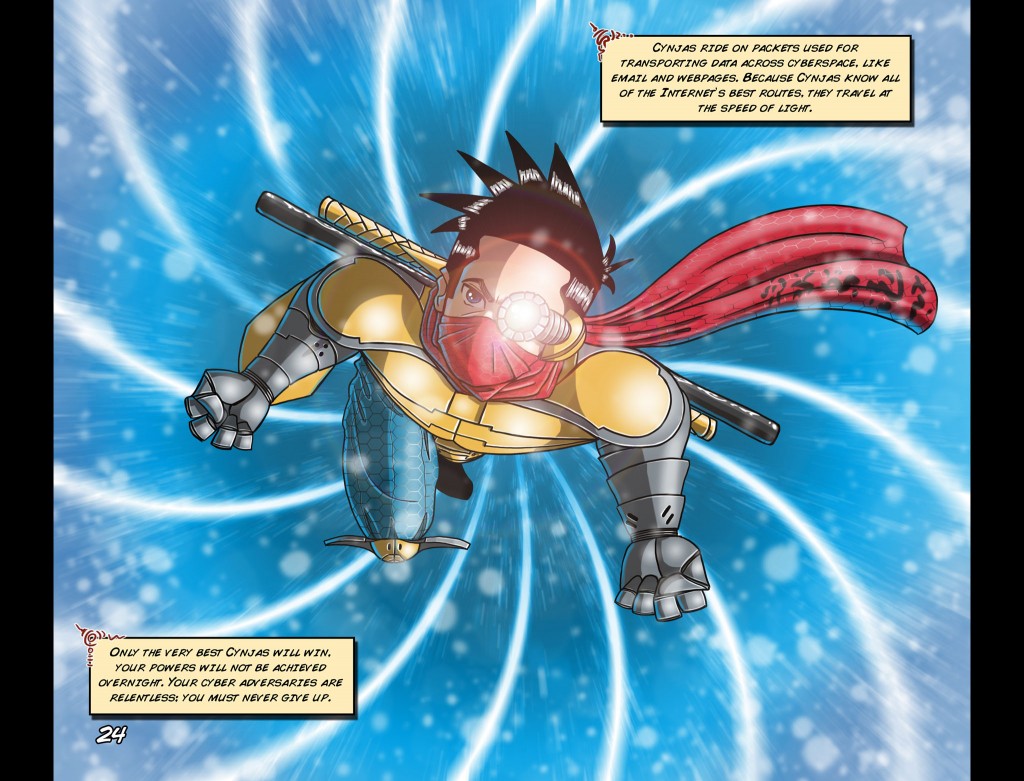
For more information visit:
https://twitter.com/ShirowDiRosso
https://www.pinterest.com/wackoshirow
Read The Children’s Book Review‘s full review of The Cynja.
Read The Children’s Book Review‘s interview with The Cynja authors, Chase Cunningham and Heather C. Dahl.
The Author Showcase is a place for authors and illustrators to gain visibility for their works. This article about Shirow Di Rosso and “The Cynja” was sponsored*. Learn more about marketing books and finding an Author Showcase book marketing plan that is right for you …
